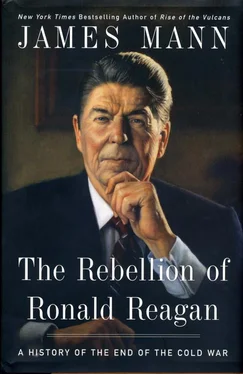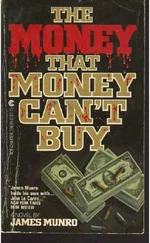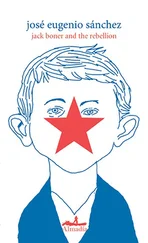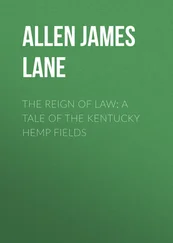In East Berlin, Erich Honecker got the message. East Germany’s Communist Party leader gave his own interview to Dutch newspapers, saying he saw no basis for removing the Berlin Wall because the circumstances that had led to the building of the wall had not disappeared. On June 4, the East German Foreign Ministry called in the leading U.S. diplomat in East Berlin to protest Reagan’s remarks in the interview about the Berlin Wall. The East German diplomat said that any questions regarding the “state border of the German Democratic Republic” were its own business. The United States should not interfere in East Germany’s internal affairs, he said. 9
These previews of Reagan’s speech served the purpose of letting the German public know what was coming. The administration was making sure that no one in Berlin, on either side of the wall, would be caught off guard by Reagan’s speech at the Brandenburg Gate. The words “tear down this wall” were meant to be a dramatic surprise primarily to Reagan’s domestic audience, that is, to Americans back home who would not have noticed how many other times Reagan or other American officials had said similar things.
The previews also helped to preempt any last-minute appeals by West German officials that Reagan play down the importance of the wall in his speech. As a result, the last-minute battles between the West Germans and Americans were fought over the question of where Reagan should deliver his speech (should it be at the Brandenburg Gate?) and not over what he should say.
Although the advance interviews by Reagan and Shultz made it plain the president would call for the wall to be dismantled, they did not reveal that the president intended to call directly upon Gorbachev to dismantle it. That was, indeed, to be a surprise.
As Reagan left the United States, his aides were still trying to overcome the perceptions that had taken hold during the Iran-Contra scandal—above all, that he was a politically crippled president, a lame duck who would merely serve out inertly the remaining twenty months of his term in the White House. “It’s not morning anymore, but it’s not the twilight of the Reagan presidency, either,” one senior White House official told the Washington Post . 10
Yet Reagan’s performance during the four-day economic summit in Venice seemed merely to reinforce these impressions of Ronald Reagan in decline. “The 76-year-old president is this week a shadow of his former self…. His leadership is compared unfavourably with that of Mr. Gorbachev,” reported the Guardian . “Mr. Reagan resembles the old bull, wounded and stiff, defying a crowd which is waiting for the next act,” said the Financial Times . 11
At the end of the summit gathering, Reagan held a news conference at Venice’s Hotel Cipriani in which he seemed to fumble several answers. The first three questions, and five of the first seven, were about Iran-Contra. National Security Adviser Frank Carlucci had instructed the president to deflect these questions by saying he was at an economic summit; Carlucci was thus dismayed to hear Reagan wade into the scandal once again, insisting he had no idea that his aides were organizing support for the Nicaraguan contras. 12At one juncture, the president suggested that the United States might be willing to tolerate a lower value for the dollar against other currencies. Aides soon rushed to correct the record and make clear this was not the case. Talking about diplomacy at the United Nations, Reagan was unable to summon forth the words “Security Council”; after a moment’s delay, he said, “committee.”
He was asked about Mikhail Gorbachev. Why did Gorbachev have such a strong image in Europe as a man of peace? “Well, maybe because it’s so unusual,” Reagan replied. “This is the first Soviet leader, in my memory, that has ever advocated actually eliminating weapons already built and in place.” The reporter persisted. “Do you trust him?” Reagan fell back on his standard answer, the familiar words given to him by Suzanne Massie. “Well, he’s a personable gentleman, but I cited to him a Russian proverb… , Doveryai no proveryai. It means trust but verify.” 13
On June 12, 1987, Ronald Reagan landed at West Berlin’s Tempelhof Airport after a ninety-minute flight on Air Force One from Venice. It was to be merely a day trip; it was not necessary to fly the Reagans’ special European bed to Berlin. Indeed, Reagan’s entire visit to Berlin lasted scarcely five hours.
He rode from the airport with West Berlin’s mayor Eberhard Diepgen, the political leader who had tried for months to keep Reagan from speaking in front of the Berlin Wall. Diepgen was by now resigned to the inevitable, having concluded that the two superpowers would not permit him to carry out the exchange with East Germany that he had so eagerly sought. 1Reagan and Diepgen sat down for talks with West Germany’s president, Richard von Weizsäcker. The German president recalled years later that Reagan’s visit had seemed mostly like a media event. Reagan did not tell von Weizsäcker what he planned to say in his speech. 2
The American president went by motorcade to the Reichstag, which had housed the German parliament until the Nazi era. During the Cold War, it was used only for ceremonial functions, while the West German parliament met in Bonn. Reagan viewed an exhibition there commemorating the Marshall Plan, and then stepped out onto a balcony so that he could look down from above at the Berlin Wall, a few hundred feet away. East Germany’s Ministry of State Security, the infamous Stasi, operated a building on the eastern side of the wall, in a location that would enable it to hear as many conversations as possible in West Berlin. Ever attentive, the U.S. Secret Service had erected a large bulletproof glass shield around the balcony to protect Reagan from this Stasi outpost for the few minutes he would be on the balcony. John Kornblum, the U.S. minister in West Berlin, thought at the time that this particular precaution was a little silly, since it was unlikely the Stasi would try to take a shot at Reagan from inside its own building. As Reagan looked at the wall, a reporter asked him whether he thought it would ever be torn down. He responded with a biblical allusion. “Well, Jericho didn’t last forever,” Reagan replied. 3
From there, it was only a three-minute car ride to the special platform that had been erected for Reagan’s speech just on the west side of the Berlin Wall, with the Brandenburg Gate in East Berlin in the background. The crowd that had assembled for Reagan was, it turned out, far smaller than the forty thousand that U.S. officials had wanted and expected. Both Berlin police and internal U.S. government estimates put the figure at twenty thousand, and some thought the crowd was even smaller than that. The participants had been given American flags, which they waved from time to time. 4
Aides had prepared for the president a special version of his speech in which all the non-English words were transliterated (for the German Ich hab’ noch einen Koffer in Berlin, Reagan’s text said, “Ish hob knock I-nen Coffer in Ber-leen.” The German street Ku’damm became “Koo-damn,” and German president von Weizsäcker was rendered as “Fun VITES-ecker.” As usual, Reagan had marked up his version of the text with diagonal slashes so that he would pause at just the right places (“General Secretary Gorbachev, if you seek peace ///if you seek prosperity for the Soviet Union and Eastern Europe ///if you seek liberalization ///come here, to this gate”). 5
West German chancellor Helmut Kohl and his wife, Hannelore, who had joined the Reagan party at the Reichstag, sat on the podium with him. First Diepgen and then Kohl welcomed the crowd. In introducing the American president, the German chancellor took note of the Berlin Wall behind him and said it could not be history’s answer to the German problem. Finally, Reagan, dressed in white shirt with a red tie, delivered effortlessly the speech over which his administration had been battling for weeks.
Читать дальше












